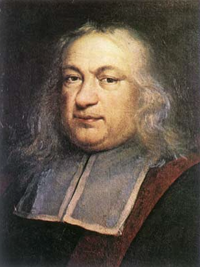Suppose you have a prime number  and some other natural number
and some other natural number  . Then, no matter what the value of
. Then, no matter what the value of  is, as long as it’s a natural number, you will find that
is, as long as it’s a natural number, you will find that
![\[ x^ p - x \]](/MI/554197a10685b0217a311a3d2c700e3f/images/img-0003.png) |
is a multiple of 
This result is known as Fermat's little theorem, not to be confused with Fermat's last theorem.
Let’s try the little theorem with a few examples. For  and
and  we have
we have
![\[ 5^2 - 5 = 25 -5 = 20 = 10 \times 2. \]](/MI/983dbd4cda5d658bff75dcf8ccb12e40/images/img-0003.png) |
For  and
and  we have
we have
![\[ 2^3 - 2 = 8 - 2 = 6 = 2 \times 3. \]](/MI/983dbd4cda5d658bff75dcf8ccb12e40/images/img-0006.png) |
And for  and
and  we have
we have
![\[ 11^7 - 11 = 19,487,171 - 11 = 19,487,160 = 2,783,880 \times 7. \]](/MI/983dbd4cda5d658bff75dcf8ccb12e40/images/img-0009.png) |
You can try it out for other values of  and
and  yourself.
yourself.
Fermat first mentioned a version of this theorem in a letter in 1640. As with his last theorem, he was a little cryptic about the proof:
"...the proof of which I would send to you, if I were not afraid to be too long."
But unlike with Fermat's last theorem, a proof was published relatively soon; in 1736 by Leonhard Euler.
But does Fermat’s little theorem work the other way around? If you have a natural number  so that for all other natural numbers
so that for all other natural numbers 

is a multiple of  does this imply that
does this imply that  is a prime?
is a prime?
If this were true, then we could use Fermat’s little theorem to check whether a given number  is prime: pick a bunch of other numbers
is prime: pick a bunch of other numbers  at random, and for each of them check whether
at random, and for each of them check whether
![\[ x^ n - x \]](/MI/597f56a079398c327804ea62ca0b6c72/images/img-0001.png) |
is a multiple of  If you find an
If you find an  for which this isn’t true, then you know for sure that
for which this isn’t true, then you know for sure that  isn’t prime. If you don’t find one, then provided you have checked sufficiently many
isn’t prime. If you don’t find one, then provided you have checked sufficiently many  you can be pretty sure that
you can be pretty sure that  is prime. This method is called Fermat’s primality test.
is prime. This method is called Fermat’s primality test.
Alas, it doesn’t quite work as well as it could. In 1885 the Czech mathematician Václav Šimerka discovered non-prime numbers that masquerade as primes when it comes to Fermat’s little theorem. The number  is the smallest of them. It’s not prime, but for all other natural numbers
is the smallest of them. It’s not prime, but for all other natural numbers  we have that
we have that
![\[ x^{561} - x \]](/MI/3ff4936d5433681d0b27b4cc7ca1e772/images/img-0003.png) |
is a multiple of 
Šimerka also discovered that  and
and  behave in the same way. Natural numbers that aren't primes but satisfy the
relationship stated in Fermat's little theorem
are sometimes called pseudoprimes, because they make such a good
job of behaving like primes, or Carmichael numbers, after the American Robert
Carmichael, who independently found the first one, 561, in
1910.
behave in the same way. Natural numbers that aren't primes but satisfy the
relationship stated in Fermat's little theorem
are sometimes called pseudoprimes, because they make such a good
job of behaving like primes, or Carmichael numbers, after the American Robert
Carmichael, who independently found the first one, 561, in
1910.
You can see from the first seven named above that Carmichael numbers aren’t too abundant. There are infinitely many of them, a fact that wasn’t proved until 1994, but they are very sparse. In fact, they get sparser as you move up the number line: if you count the Carmichael numbers between 1 and  , you’ll find that there are only around one in 50 trillion.
, you’ll find that there are only around one in 50 trillion.
Carmichael numbers do hamper Fermat's primality test somewhat, but not so badly as to make it totally unusable. And there are modified versions of the test that work very well. As cans of worms opened by Fermat go, the one involving Carmichael numbers definitely wasn't the worst.
